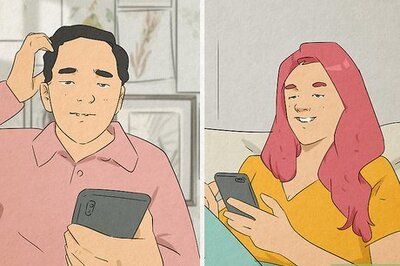
views
There is no doubt that for any age group, it is inevitable to stay away from screens beyond a point. With the COVID-19 pandemic, the massive shift to digital made all of us dependent on our smartphones, computers, or other devices. School or office work is highly centred around the usage of smart devices. But most people, as a result of constant exposure to screens, develop poor posture, have acute pain in their backs, and have other health issues. Evidence for the same was given by a group of Brazilian researchers who identified a number of risk factors for spinal health, including sitting or lying on one’s stomach and using screens for longer than three hours every day.
The study was published in the scientific journal Healthcare and dealt with the increasing risks of thoracic spine discomfort (TSD). For the purpose of the study, the researchers surveyed male and female students aged 14 to 18 in Bauru, a medium-sized city in the state of São Paulo, during their first and second years of high school. For readers who are not aware, the thoracic spine, which runs from the base of the neck to the beginning of the lumbar spine, is found at the back of the chest (the thorax), primarily between the shoulder blades.
The study says, the prevalence of thoracic spine pain (TSP) varies by age group in the general population around the world, with prevalence rates for adults ranging from 15% to 35% and for children and adolescents from 13% to 35%. Clearly, the issue got worse as the use of electronic gadgets grew rapidly during the COVID-19 pandemic.
According to various studies, anatomical, physiological, psychological, and behavioural risk factors are connected to TSP. The effects of physical exercise, sedentary behaviour, and mental illnesses on spinal health are also prevalent. The survey also concluded that children and adolescents with back pain are more sedentary, perform worse academically, and have more psychosocial issues.
What can you do?
- Take breaks – One of the easiest techniques is to stop bingeing. Taking breaks in between work or classes or while you are watching a show can help improve your poor posture. Move about your house, take a short walk from your room to the kitchen, or stand up for some time.
- Use a desk – Instead of lying on your bed, use a desk and chair. This way, you can maintain a good posture and also not strain your eyes.
- Exercise – You can also take up some back exercises regularly to relieve the pain, In the case of persistent pain, you should visit a doctor.
Read all the Latest Lifestyle News here


















Comments
0 comment